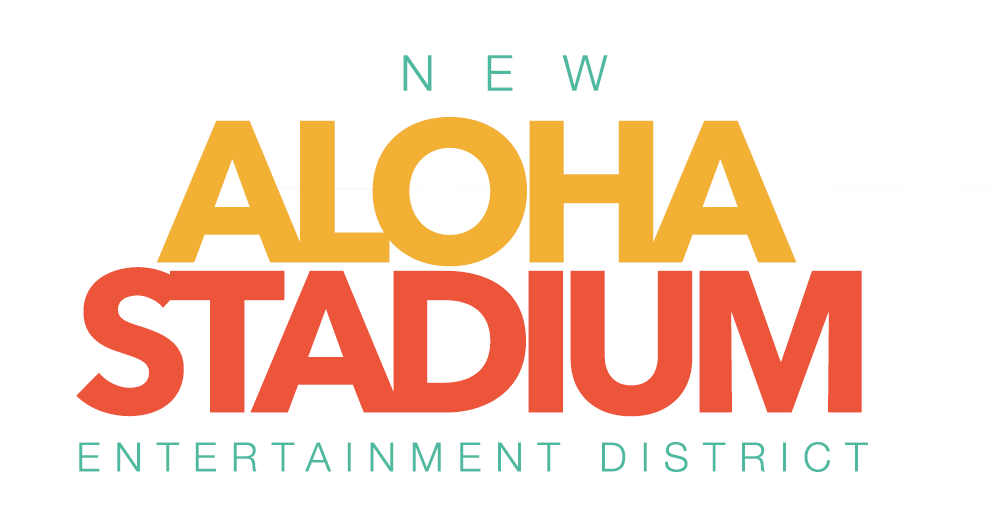Honolulu Star-Advertiser
Hawaii News
By Andrew Gomes
May 30, 2021
When state officials seek proposals to replace Aloha Stadium perhaps as early as July, they will be asking private developers to front much of the expense in a new twist on the plan that now stands to cost taxpayers more money in the long run.
The change in the continually shifting public-private- partnership plan to redevelop the stadium and surrounding real estate stems from a hitch in the state’s initial funding setup.
The original finance plan from 2019 anticipated using $180 million in revenue bonds for just over half the estimated $350 million cost of a new stadium. However, the state Department of Accounting and General Services later recognized that sufficient revenue from new development at the Halawa site won’t materialize soon enough to repay such bonds.
The 2019 formula approved by lawmakers also included $150 million in general obligation bonds and $20 million in cash, though last year an additional $20 million in general obligation bonds replaced the cash.
Lawmakers this year debated how to adjust the financing, and a split emerged with the House Finance Committee opposing an original provision in House Bill 1348 to swap the $180 million of revenue bonds with an equal amount of additional general obligation bonds.
Key leaders in the Senate supported a DAGS recommendation to preserve the $350 million funding total. But in a compromise to pass a final version of the bill, which contained other provisions critical to advance the project, Senate leaders accepted the House leadership position to eliminate revenue bond funding with no replacement.
So now a private partner will be asked to pay for much of the new stadium’s cost when DAGS seeks competitive proposals from three previously qualified development teams, according to Chris Kinimaka, the agency’s public works administrator.
As a result, the state must repay the developer, and this long-term expense will certainly be more than what the state would have paid in interest on general obligation bonds since for-profit developers generally seek much higher returns on investments compared with tax-free bond financing where interest in recent years has ranged from 2% to 5%.
Sen. Glenn Wakai (D, Kalihi-Salt Lake-Aliamanu), a lead backer of the bill and strong proponent of stadium area redevelopment, isn’t concerned the funding change will hurt the project.
“I wish it were $350 million in cash, but I respect the money (committee) chairs having to balance the budget,” he said. “We will adapt to financing this project with what we have and work with private investors to fill in the pukas.”
Rep. Sylvia Luke (D, Punchbowl-Pauoa-Nuuanu), who chairs the House Finance Committee, said reluctance to swap revenue bonds for more general obligation bonds stemmed in large part from Gov. David Ige in February questioning the wisdom of building a new facility instead of pouring more money into fixing the incredibly rusted 46-year-old Aloha Stadium, which was declared unusable for spectators in December because of costly maintenance challenges.
“It raised red flags,” Luke said.
She also said DAGS has flexibility to seek new revenue bond or general obligation bond funding next year or beyond to replace any developer financing.
Kinimaka agreed, but also said having a private developer pay much of the up-front cost for a new stadium will mean higher long-term costs and lower long-term returns for the state.
Exactly what the costs end up being will largely depend on developer proposals and a final development agreement negotiated by DAGS and the Stadium Authority, a board-directed agency that operates Aloha Stadium and will operate a new stadium.
Three years ago, DAGS estimated it could cost $350 million to build a new stadium with around 35,000 seats to replace 50,000-seat Aloha Stadium. In April, Kinimaka disclosed a new estimate of $423 million, though a more recent estimate is now under $400 million.
If the cost ends up being $400 million, a developer could be tasked with financing 58% of the project, or $230 million.
Still, Kinimaka said the public-private partnership, or P3 arrangement, should give the state some savings compared with a traditional procurement scenario where the state picks the lowest-cost bid among qualified bids.
This is partly because the request for proposals will task the developer with maintaining a new stadium for 30 to 40 years at a prearranged price to be paid by the state if proscribed maintenance standards are met.
Kinimaka said this gives the state’s partner an incentive to build a high-quality and long-lasting stadium for the lowest price, as opposed to the arrangement that produced an almost immediately dysfunctional Aloha Stadium that turned into a long-term maintenance nightmare.
“The P3 developer is invested in the quality of the built facility and the way it is maintained,” she said in an email. “This principle of a higher cost of capital in return for long-term risk transfer to the private sector is a key principle of P3 projects.”
DAGS expects to issue its request for proposals in July, followed by a negotiated agreement about a year or so from now. Opening a new stadium isn’t expected until beyond 2023.
DAGS also plans to offer a 99-year lease and redevelopment rights for a 78-acre balance of the stadium’s existing 98-acre site to a private developer to produce a new residential and commercial community.
This piece of the project is designed to generate revenue for the state that can at least partially offset taxpayer costs for a new stadium, and could include 3,300 homes, 650 hotel rooms, retail space and offices built over a couple decades or so.
DAGS anticipates publishing a request in July for prospective developers to submit credentials to take on the project around a new stadium, followed by a request for proposals and then selecting and finalizing terms with a winning developer by mid-2022.
READ FULL ARTICLE HERE.

